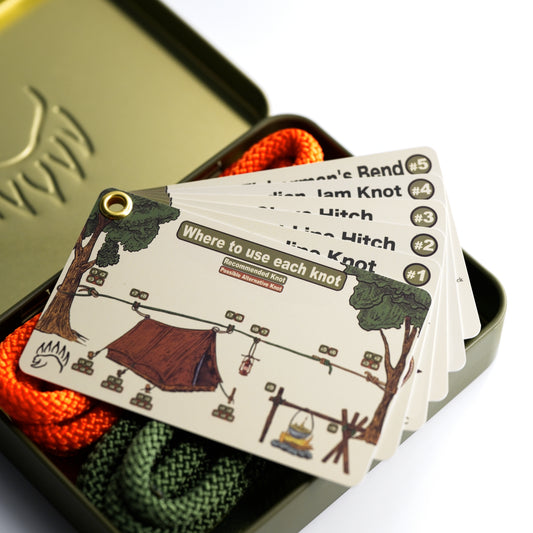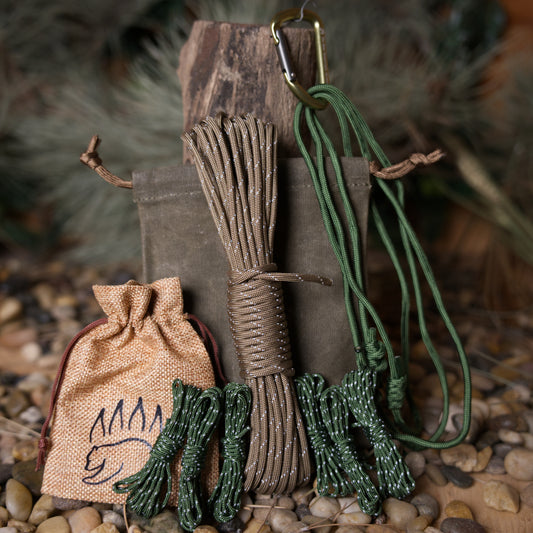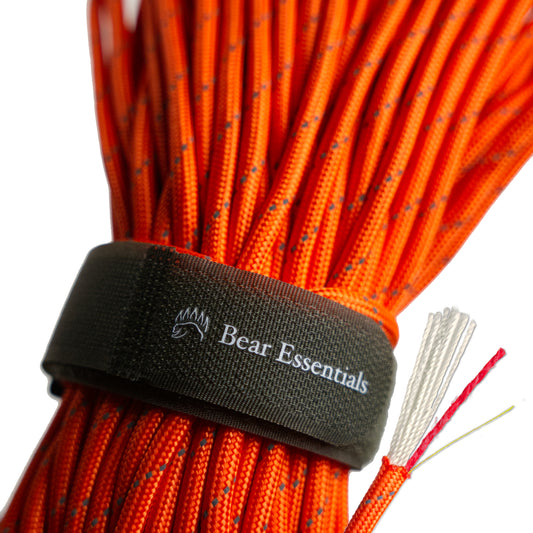How to Tie the Simple Noose Knot
Usage
The Simple Noose Knot is a versatile knot for forming adjustable, sliding loops. It's used in various outdoor and utility tasks, especially in fishing and bushcraft, where a quick, temporary loop is needed.
Why Learn the Simple Noose Knot?
The Simple Noose Knot is quick to tie and versatile for a range of tasks, from securing gear to setting traps. Its adjustability makes it a must-learn knot for outdoor enthusiasts.
Common Uses
-
Fishing:
- Secures temporary loops for tackle or bait setups.
- Creates adjustable loops for quick line adjustments.
-
Utility:
- Ties cords for bundling items or securing bags.
- Forms temporary loops for household tasks.
-
Bushcraft:
- Hangs food bags or gear off the ground.
- Sets traps or snares for small game.
ABOK Number
(Ashley Book of Knots)
Other Names
Category
|
Notable Features
- Adjustable Loop: Tightens or loosens easily for flexible use.
- Quick to Tie: Forms in seconds, ideal for rapid setups.
- Lightweight Tasks: Secures gear or lines in low-load scenarios.
- Versatile Applications: Works in fishing, bushcraft, or household cord management.
Variations
(No true variations mentioned; section left blank.)
Similar Knots
Slip Knot vs. Simple Noose Knot
- Pros: Equally quick to tie and releases easily with a pull.
- Cons: Slightly less adjustable than the Simple Noose for dynamic loops.
Honda Knot vs. Simple Noose Knot
- Pros: More durable for lasso use, with a tighter stopper knot.
- Cons: More complex to tie and less suited for quick, temporary ties.
History
The Simple Noose Knot has roots in maritime and fishing traditions, where adjustable loops were needed for securing lines or nets. Referenced in The Ashley Book of Knots (#1120), it’s valued for its simplicity and quick release. Its use in bushcraft and utility tasks highlights its adaptability for creating temporary loops in outdoor and household settings.
Security Level
The Simple Noose Knot provides moderate security for light-duty tasks, effectively forming an adjustable loop that holds under minimal tension. It may slip or loosen without a backup knot, especially on slick ropes. Add the overhand knot stability for enhances reliability for critical applications.
Downsides
- Limited strength: Slips under heavy loads without a stopper knot.
- Rope dependency: Less effective on stiff or braided ropes.
Structure
- Form a small loop in the rope, leaving a long working end.
- Pass the working end through the loop to create a larger, adjustable loop.
- Pull the working end to tighten the small loop around the standing line.
- Adjust the larger loop size by sliding the knot along the standing line.
- Secure with an overhand knot on the working end if needed for stability.
Pro Tip: Keep the small loop tight to prevent unintended slipping.
FAQ
Is the Simple Noose Knot strong enough for heavy loads?
It’s suitable for light tasks but requires a stopper knot for heavier loads to prevent slipping.
What’s the best rope for the Simple Noose Knot?
Flexible, smooth ropes like nylon or polyester work best for easy sliding and tightening.
How does the Simple Noose Knot compare to the Slip Knot?
The Simple Noose is more adjustable for loop size, while the Slip Knot is quicker to release.
Can the Simple Noose Knot be used in climbing?
No, it’s not safe for climbing due to its tendency to slip; use knots like the Bowline instead.
Why choose the Simple Noose Knot over the Honda Knot?
The Simple Noose is faster to tie and better for temporary, low-load tasks.
Important Notes on Safety
Common failure points include the knot slipping under load or loosening without tension. Always verify the knot is tight and test it under light load before use. Check rope for wear or stiffness before tying. Ensure the small loop is snug to maintain grip. Practice tying in low-stakes settings first.







